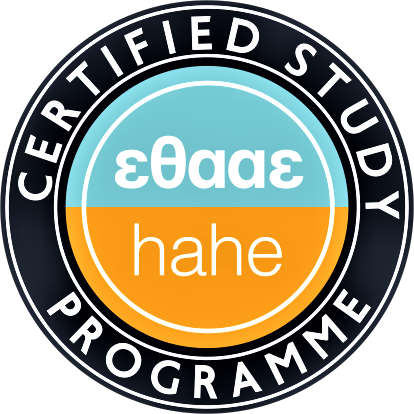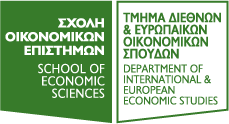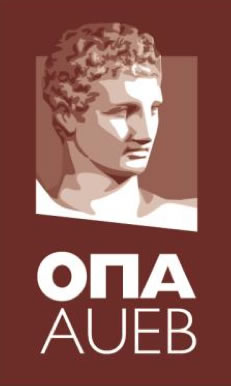Microeconomics III
Number of credits allocated: 6 ECTS Credits
Objective of the course (expected learning outcomes and competences to be acquired)
This course is intended to extend the topics covered in Microeconomics II to include strategic interaction and General Equilibrium considerations. The philosophy remains the same. We aim at combining analytical and graphical tools in a basic but rigorous exposition of the topics covered.
Prerequisites: Microeconomics 1
Course contents
1. Game Theory
(a) Games and their representation: Extensive and normal forms.
(b) Static games of complete information
i. Dominant/dominated strategies. Iterated deletion of dominated strategies
ii. Nash equilibrium in pure strategies.
iii. Nash equilibrium in mixed strategies.
(c) Dynamic games of perfect information.
(d) Subgames and Subgame perfection. Subgame perfect Nash equilibria.
2. Oligopoly
(a) Cournot oligopoly with n players.
(b) Cournot oligopoly with asymmetric costs.
(c) Bertrand oligopoly.
(d) Stackelberg oligopoly.
(e) Oligopoly and welfare.
3. General Equilibrium
(a) Exchange economies.
(b) Edgeworth box.
(c) Prices and general equilibrium.
(d) Pareto set and efficiency. First and second welfare theorems.
(e) Existence-Uniqueness of equilibrium. Stability.
(f) Production and general equilibrium. Production possibility frontier.
4. Economics of welfare
(a) Social choice and social choice rules.
(b) Arrow’s (Im)possibility Theorem.
(c) Relaxation of Arrow’s assumption and social welfare functions.
(d) Utility possibility frontier and utility possibility set.
(e) Social choice. Envy-free allocations. Just allocations. Pareto efficiency.
5. Externalities and public goods
(a) Externalities
i. Externalities in production and consumption.
ii. Externalities and inefficiencies in partial equilibrium.
iii. Externalities and inefficiencies in general equilibrium.
iv. Correcting inefficiencies:
o Pigouvian tax-subsidy.
o Coase’s “Theorem” and bargaining.
o Markets for externalities.
(b) Public goods and inefficiencies due to externalities.
(c) The free-riding problem..
Recommended reading
I suggest a rather long list of references. You should try as many textbooks and articles as possible to decide which you like. Different texts might cover different topics in a way that suits you best. Starting from the top of the list, I suggest some good undergraduate textbooks that should give a good first introduction to the issues covered. Proceeding towards the bottom, you will find textbooks of increasing difficulty and primary literature. Don’t be disappointed if you cannot follow the more difficult textbooks/papers. For those of you who are really enjoying microeconomics they might serve as an appetizer. For the rest, just to introduce you to what more advanced microeconomics looks like...
Undergraduate-advanced undergraduate textbooks
A classic textbook is Varian (2005) and the somewhat more difficult Gravelle & Rees (2004). Somewhat more recent approaches can be found in Nicholson & Snyder (2011) and Besanko & Braeutigam (2012) with a diagrammatic approach throughout the text and a little more algebra in the appendices.
For micro enthusiast
As a graduate textbook Varian (1992) is a classic and widely used. Mas-Colell, Whinston & Green (1995) are perhaps the most complete reference book in economics. At times it is very difficult. Some parts however can be read by a technically proficient undergraduate student. In any case it is
The reference book in graduate micro and cannot be omitted. An excellent alternative, somewhat more easy is provided Jehle & Reny (2001). Rigorous but at times sacrificing generality to become more understandable. For a good look into uncertainty Hirshleifer & Riley (1992). For game theory, try Gibbons (1992) and Osborne (1992).
Teaching methods: Two 2-hour weekly lectures.
Assessment methods:
Final written exam. Exams consist of a number of multiple choice questions (around 25) that account for 70% of the final mark a choice of one out of two essay type question corresponding to the remaining 30%. Use of calculators/phones-smartphones or any other kind of electronic devices is NOT ALLOWED during the exams. Any such devices should be stashed away. Exercises will be constructed to allow easy solutions for students with basic knowledge of algebra, differentiation, perhaps a little integration and constrained optimisation. For the rest I suggest looking into the above before attempting an exam.
Language of instruction: Greek





 Patision 76
Patision 76 2108203 106 / 2108203 107
2108203 106 / 2108203 107 
